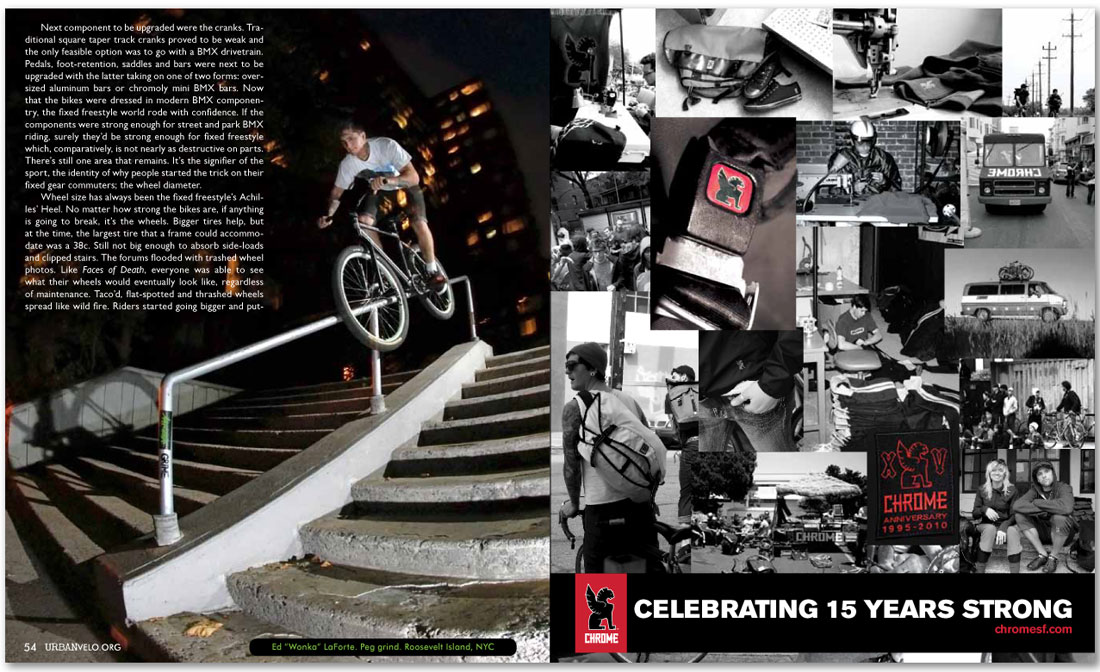


Next component to be upgraded were the cranks. Traditional square taper track cranks proved to be weak and the only feasible option was to go with a BMX drivetrain. Pedals, foot-retention, saddles and bars were next to be upgraded with the latter taking on one of two forms: oversized aluminum bars or chromoly mini BMX bars. Now that the bikes were dressed in modern BMX componentry, the fixed freestyle world rode with confidence. If the components were strong enough for street and park BMX riding, surely they’d be strong enough for fixed freestyle which, comparatively, is not nearly as destructive on parts. There’s still one area that remains. It’s the signifier of the sport, the identity of why people started the trick on their fixed gear commuters; the wheel diameter.
Wheel size has always been the fixed freestyle’s Achilles’ Heel. No matter how strong the bikes are, if anything is going to break, it’s the wheels. Bigger tires help, but at the time, the largest tire that a frame could accommodate was a 38c. Still not big enough to absorb side-loads and clipped stairs. The forums flooded with trashed wheel photos. Like Faces of Death, everyone was able to see what their wheels would eventually look like, regardless of maintenance. Taco’d, flat-spotted and thrashed wheels spread like wild fire. Riders started going bigger and put-
Ed “Wonka” LaForte. Peg grind. Roosevelt Island, NYC
Chrome